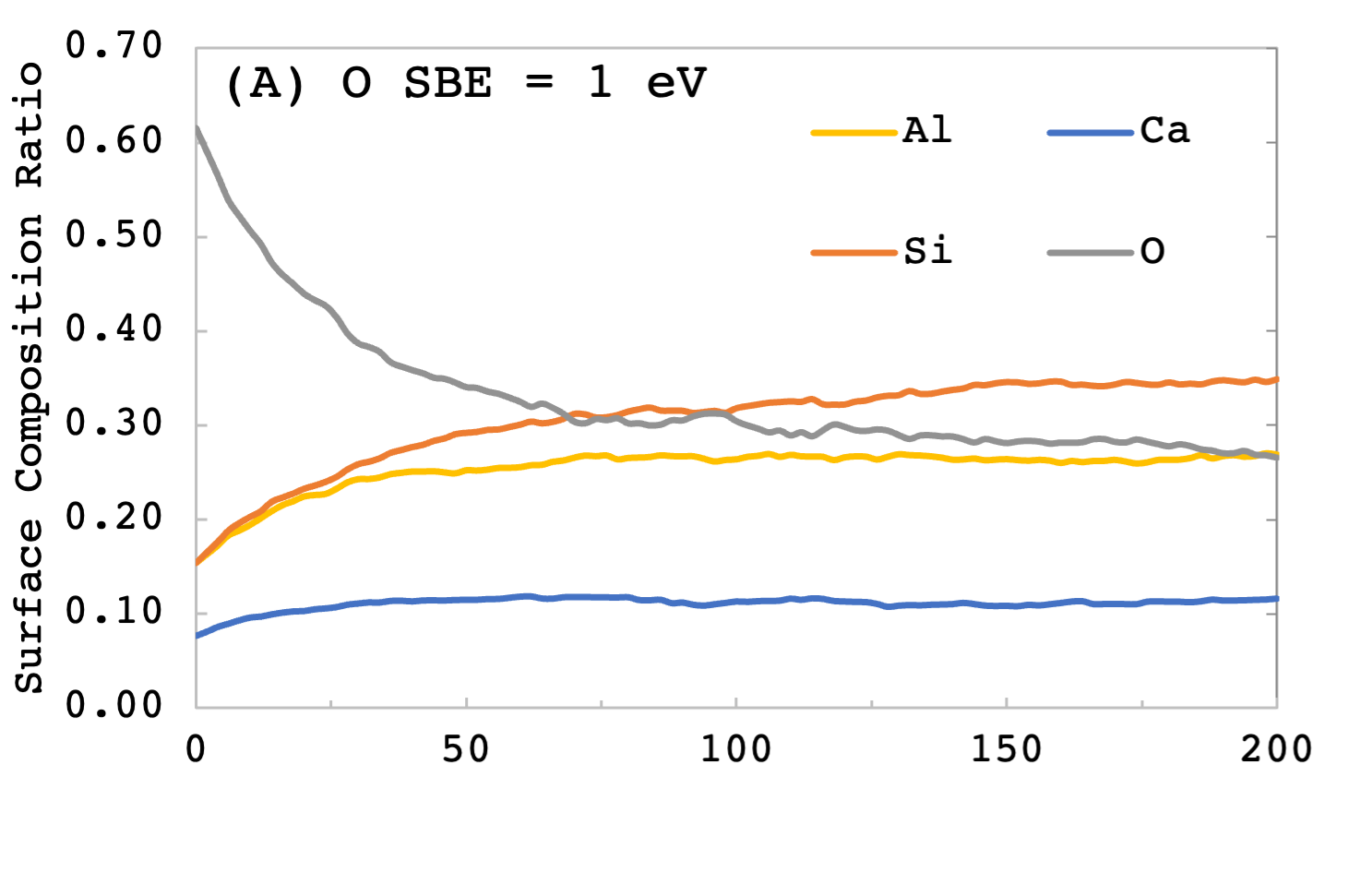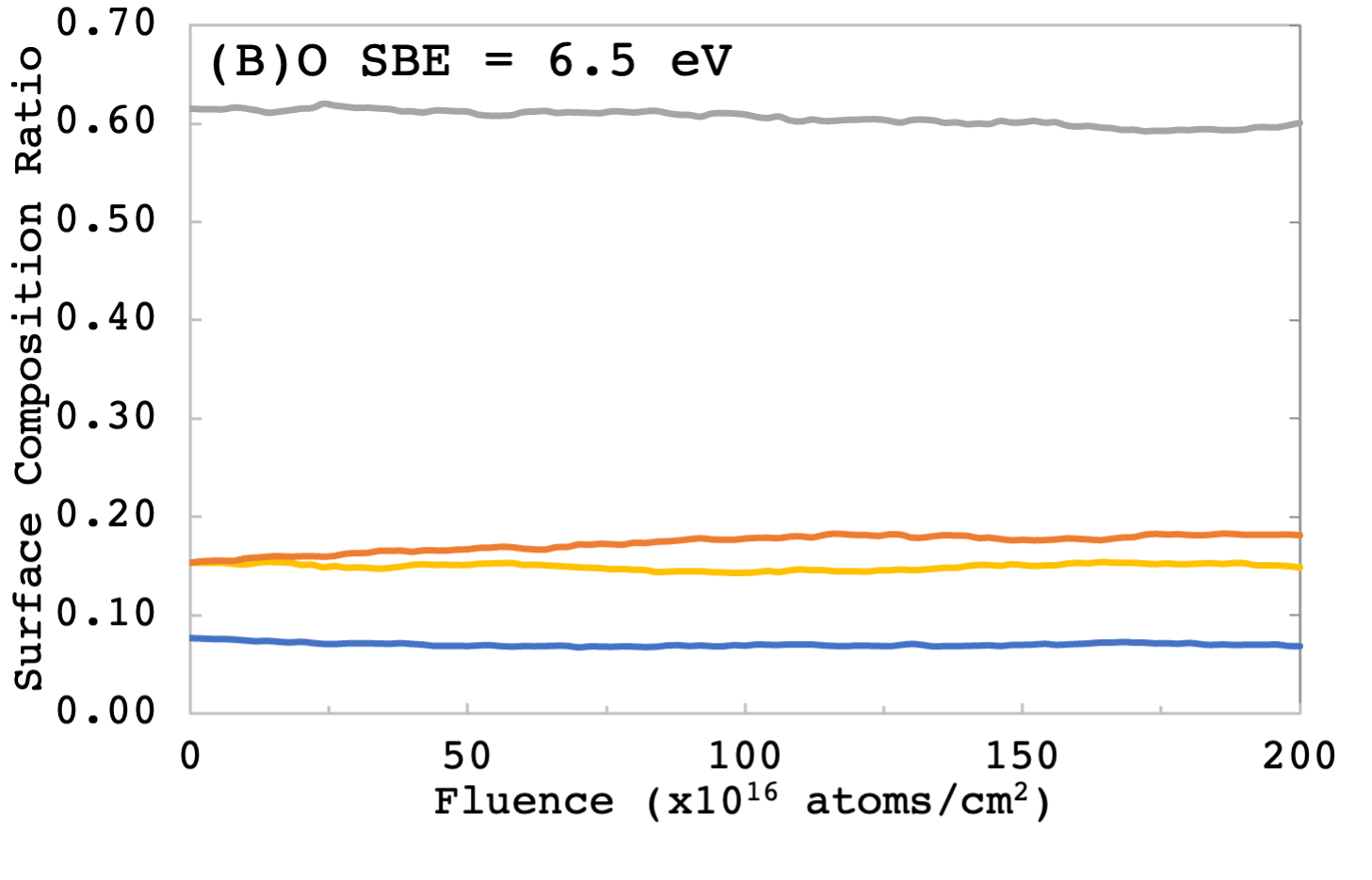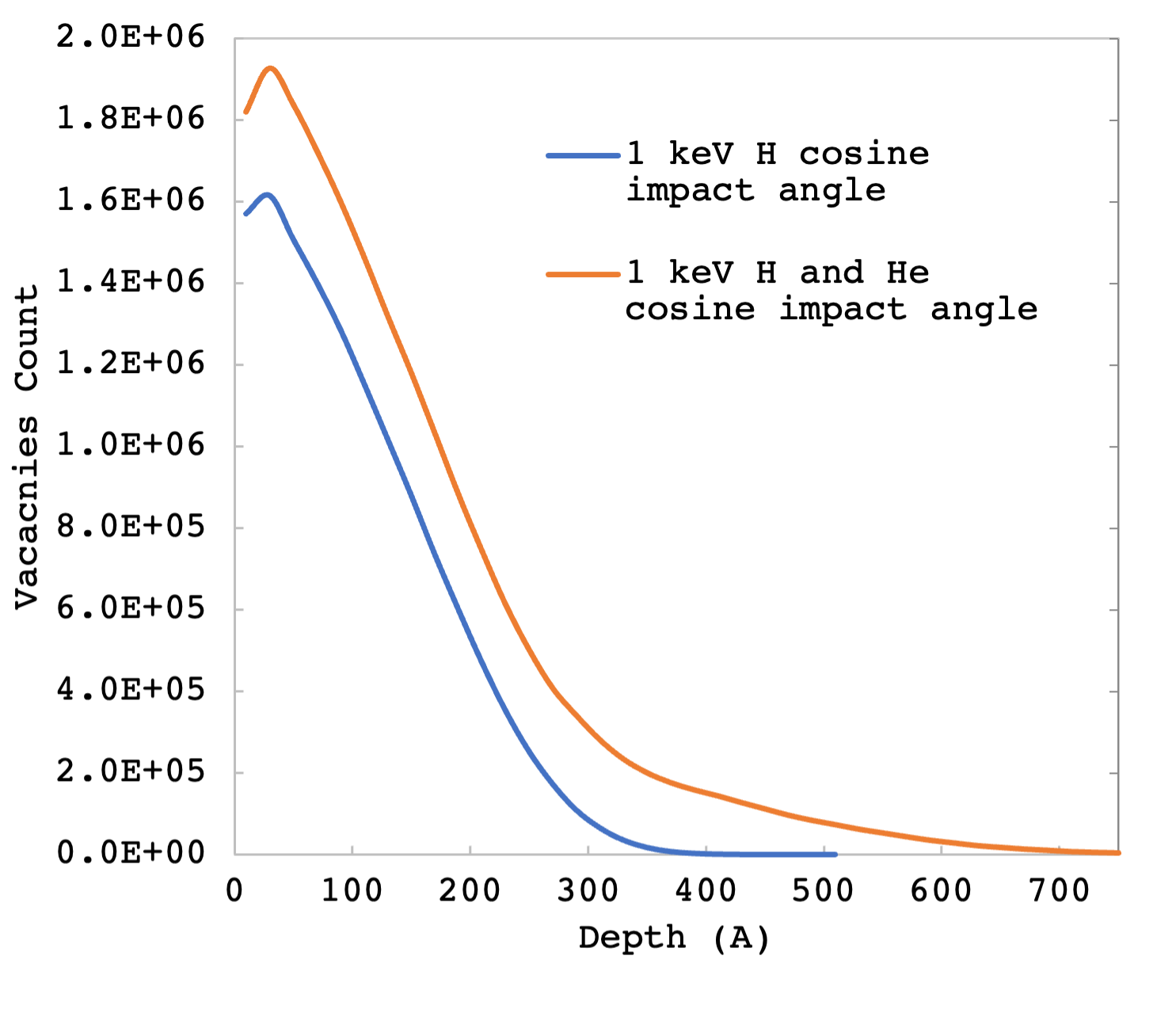Establishing a Best-Practice for SDTrimSP Simulations of Solar Wind Ion Induced Sputtering
- 1Catholic University, Washington, USA
- 2NASA Goddard Space Flight Center, Greenbelt, USA
- 3School of Chemistry and Biochemistry, Georgia Institute of Technology, Atlanta, USA
- 4Space Sciences Laboratory, University of California, Berkeley, USA
- 5Embry-Riddle Aeronautical University, Daytona Beach, USA
- 6Columbia Astrophysics Laboratory, Columbia University, New York, USA
Introduction: Surface sputtering by solar wind (SW) ion irradiation is an important process for understanding the surface and exosphere of airless celestial bodies such as the Moon, Mercury, and asteroids. In addition to SW ion induced sputtering, processes such as photon and electron stimulated desorption and impact vaporization, can also contribute to the exosphere formation around airless bodies. A better understanding of relative contributions of these processes is needed to interpret ground-based and spacecraft observations of the exosphere. Our focus here is on SW ion induced sputtering. Laboratory simulations are both complex and expensive. Hence, theoretical sputtering models are used to study the incoming ions, impacted surface, and sputtered atoms. The most common sputtering models, such as TRIM and SDTrimSP, use the binary collision approximation (BCA) and predict the yield and energy distribution of sputtered atoms, along with the depth of deposition and damage, all as a function of the incoming ion type, impact energy, and impact angle.
Within SDTrimSP there are several inputs that have been applied differently in previous SW sputtering simulations1,2,3. These parameters can influence the simulated behavior of both the target and sputtered atoms. Laboratory data is often readily available for comparison with ion sputtering simulations from monatomic or simple oxide targets, and simulations can closely match experimental sputtering yields over a broad energy range. Comparatively, little work has been done to determine how the simulation parameters should be chosen for more complex targets relevant to planetary surface analogs. It is therefore of great interest to understand how sensitive sputtering behavior is to these inputs and what parameter choices best approximate SW sputtering. We have conducted a detailed sensitivity study into SDTrimSP parameters to produce a best-practice for simulating SW impacts onto the lunar surface. These results can be used to establish a more consistent methodology for simulations of SW induced sputtering.
Methods: First, we consider the sensitivity of the SDTrimSP simulated SW sputtering behavior to several user input parameters. In all cases we simulated the effect of H or a combination of H and He onto an anorthite (CaAl2Si2O8) surface. Within SDTrimSP we considered the role of the O surface binding energy (SBE), ISBV (the method of dealing with SBEs for compounds), static vs. dynamic simulations, impact energy approximations, incidence energy approximations, and the elemental composition of the SW. For all parameters we quantified their effect on the overall sputtering yield, elemental composition of the sputtering yield, elemental surface concentration, damage production, and energy distribution of sputtered atoms. Based on these sensitivity results we recommend a best-practice for simulating SW sputtering using SDTrimSP.
Results: The predicted sputtering behavior was shown to be highly dependent on several of the SDTrimSP parameters considered. For example, previous SW simulation studies have used O SBEs between 1 and 6.5 eV, based on recommended values, fitting to experiment, and monomatomic sublimation energies. For all cases considered, the O SBE had a significant affect on the overall and elemental yield. Furthermore, dynamic simulations, which allow for the surface to change as a function of fluence, better represent the surface evolution during SW impacts. The effect of the O SBE can also be seen in the surface composition as a function of fluence (Fig 1). For an O SBE of 1 eV, strong preferential sputtering of O is observed, and the surface composition fraction is reduced from 0.6 to 0.3 at a fluence of 200 x 1016 atoms/cm2. In contrast, there is almost no reduction in O surface composition for an SBE of 6.5 eV. This large depletion in surface O at an SBE of 1 eV has not been observed in previous irradiation experiments of silicates4,5,6. Therefore, O SBEs of 1 eV are likely not representative of what would be seen for materials relevant to planetary science.
Varying the ion incidence angle also significantly affected the sputtering behavior. Impacts normal to the surface are often used to simulate a flat surface and can more easily be compared to experimental data. However, the surface of the Moon and Mercury consists largely of approximately spherical weathered grains. As a result, incoming SW ions are impacting the surface at many different relative angles. When oblique incidence angles are simulated the elemental and overall yields increase in all cases. For both cases there was also an increase in the peak of the damage distribution along with a reduction in depth at this peak.
Accounting for the He component in the SW leads to a 20% increase the elemental sputtering yields and and a 20% increase in the damage produced within the substrate (Fig 2). Therefore, while He makes up only 4% of the SW it accounts for over 20% of the sputtering behavior. When comparing the H and H + He options the proportion of O in the yield stays consistent. This suggests that a factor could be used to account for the He contributions.
In summary, while SDTrimSP represents a valuable tool to better understand the effect, the results are highly dependent on many user-specific parameters. This study directly quantifies these sensitivities on the SW-induced sputtering behavior and concludes with the following best-practice recommendation for SDTrimSP simulations of SW sputtering:
- 1 keV/amu impacts (96% H, 4% He) to approximate SW composition
- Dynamic simulations to allow for the behavior to evolve as a function of fluence
- Cosine distribution of impact angles onto the surface to approximate spherical grains
- Incorporation of mineral specific SBEs where possible
References:
1. Mutzke, A., et al. (2019) “IPP-report 2019-02”
2. Szabo, P. S., et al. (2018) doi: 10.1016/j.icarus.2018.05.028
3. Schaible, M. J., et al. (2017) doi: 10.1002/2017JE005359
4. Dukes, C.A., et al. (1999) doi: 10.1029/98JE02820
5. Dukes, C.A., et al. (2015) doi: 10.1016/j.icarus.2014.11.032
6. Laczniak, D.L., et al. (2021) doi: 10.1016/j.icarus.2021.114479


Fig 1. Surface composition as a function of fluence for and O SBE of 1 eV (A) and 6.5 eV (B)

Fig 2. Count of vacancies as a function of depth for different SW compositions using a cosine distribution of the impact flux vs impact angle
How to cite: Morrissey, L., Schaible, M., Tucker, O., Szabo, P., Bacon, G., Killen, R., and Savin, D.: Establishing a Best-Practice for SDTrimSP Simulations of Solar Wind Ion Induced Sputtering , Europlanet Science Congress 2022, Granada, Spain, 18–23 Sep 2022, EPSC2022-723, https://doi.org/10.5194/epsc2022-723, 2022.

